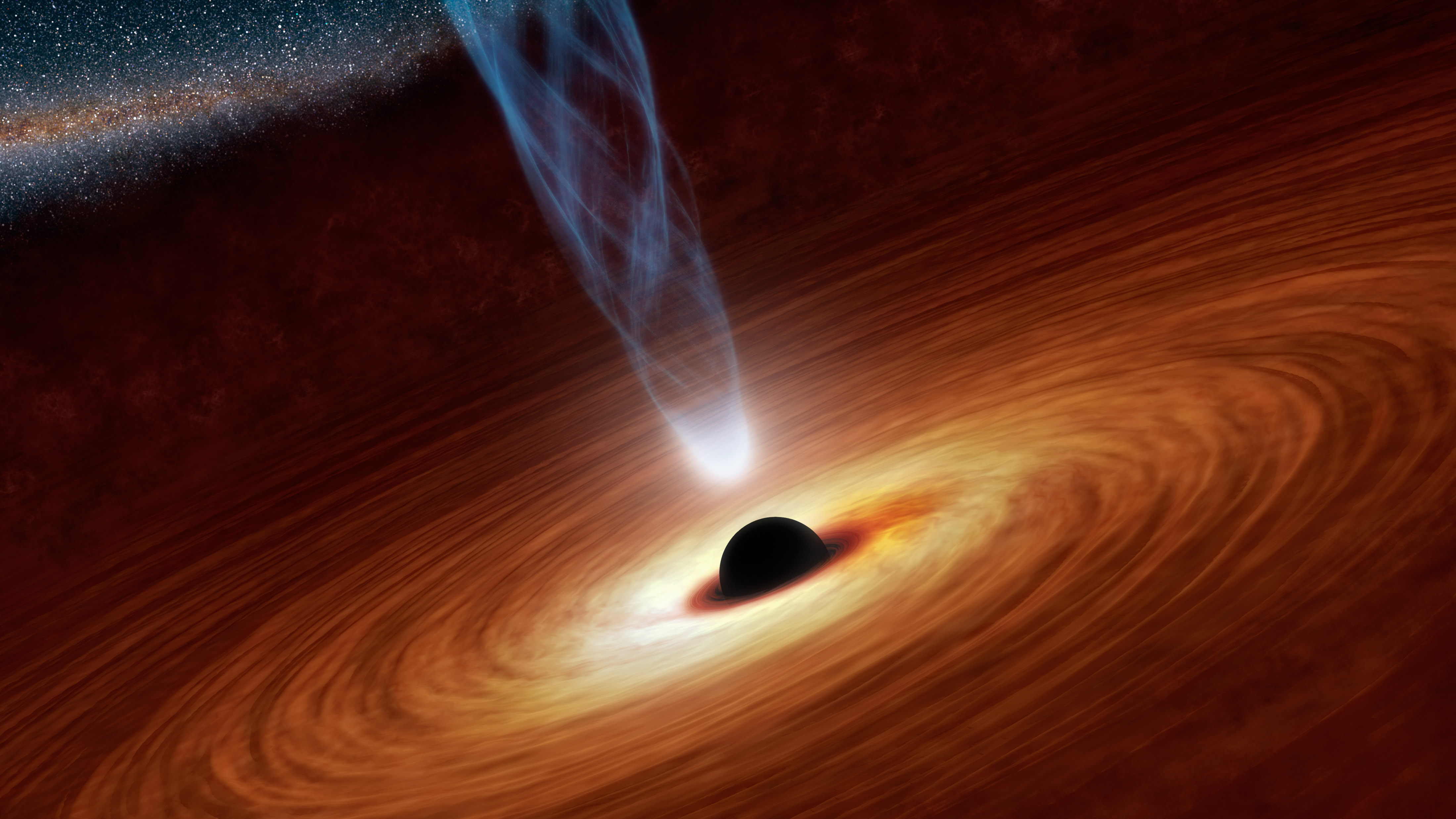Create a free profile to get unlimited access to exclusive videos, sweepstakes, and more!
A record-breaking quasar poses a supermassive problem

Astronomers have discovered the second-farthest quasar ever found, a mind-stomping 13 billion light years from Earth. It has a supermassive black hole in its heart that tips the cosmic scale at 1.5 billion times the mass of the Sun, making it the most massive black hole seen at that distance*.
And that, it turns out, is a problem.
The quasar's technical name is J1007+2115 (after its coordinates on the sky), but astronomers have nicknamed it Pōniuā'ena, an indigenous Hawaiian word meaning "unseen spinning source of creation, surrounded with brilliance", which is simultaneously as accurate and poetic a description of an active galaxy I've heard†.
It was found in a survey of the sky looking for very distant galaxies like it, and then astronomers observed it more carefully with various very large telescopes to get a spectrum of it, confirming its distance.
A quasar is an active galaxy, where the supermassive black hole in its core is actively eating matter around it. As the matter piles up in a disk around the hole before it falls in, friction heats it to ridiculously high temperatures, causing it to glow fiercely. This disk is so luminous it can easily outshine all the stars in the galaxy, and these disks are the most powerful continuous sources of energy in the Universe.
A spectrum — breaking the light up into hundreds or thousands of individual colors — can tell you a lot about an object. For example, as material whirls around the black hole we see the color of the light from it both red and blueshifted (material on one side heads away from us, and on the other side toward us). The amount of this shift tells us the mass of the black hole, which is 1.5 billion times the Sun's mass, a huge number. Only one other quasar is known this far from us, J1342+0908, and its black hole is only about half this massive.
Also, as the Universe expands, distant objects appear to move away from us, imparting a redshift on the light that can tell us how far away it is. In this case, the wavelengths have redshifted by a factor of 8.5 (due to the math of this, we say it has a redshift of 7.5; a redshift of 0 is here, in the local Universe, a redshift of 1 is where the wavelengths have doubled, and so on), which means it is very far away. It's not quite as far as J1342+0908, but its black hole is way bigger.
And that's the problem. The Universe is only 13.8 billion years old, which means this black hole grew huge fast. Like, really quickly, much more quickly then current theories think is possible.
This has been a recurring problem with distant galaxies. One solution to this is that they can grow more quickly then we suppose. That's possible, though difficult. If too much gas flows into them, the huge amount of energy generate by the heat tends to blow gas away, choking off the flow. There are ways around this, a little, using things like magnetic fields and such, but it's still hard to get enough matter falling in.
Another idea is that they started off relatively big. Supermassive black holes get their start from smaller seed black holes, ones with a mere (!) ten or hundred thousand times the Sun's mass. If the seed starts off bigger, that helps. Or maybe a bunch of them can form separately and fall together to merge, though that's rather difficult to do as well.
For Pōniuā'ena's black hole to get to the swollen 1.5 billion solar masses in just 800 million years after the Big Bang, it would have to have started as a seed with 10,000 solar masses 100 million years after the Big Bang (or one of 300,000 solar masses 275 million years after the Bang). That still implies a lot of growth. It's not clear how this can happen in detail, though a lot of ideas have been published.
And that's the beauty of this observation. It's not a record breaker per se, but it's another piece of data astronomers can use to figure out what's going on way out there at the edge of the observable Universe.
We really don't have a firm grasp on what's happening (well, what happened) at this epoch in the young Universe (go here and search for the word "reionization"), and every galaxy we find is another light shining — literally — on the possible answers.
*Last week I wrote about a much more massive black hole, but it was located at 12.5 billion light years from Earth. This one is 500 million light years farther away yet, which is significant at these distances; the young Universe changed rapidly, and finding them at even a little bit more remote a location is important.
†The name was given as part of a program called A Hua He Inoa, linking traditional Hawaiian language and astronomy, which is a pretty cool idea.




























